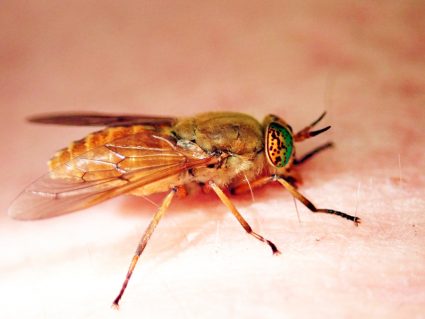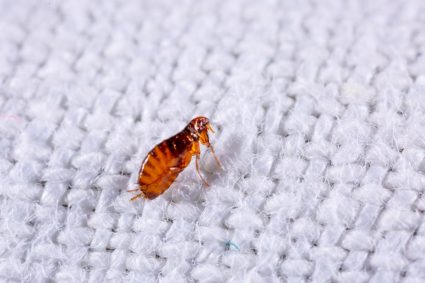
In today’s blog post, we will delve deep into the world of mites, those tiny creatures that can cause a variety of health problems and discomfort in your home. We’ll discuss the different types of mites, how to identify an infestation, potential health risks, and most importantly, how to eliminate them from your house. By the end of this comprehensive guide, you’ll have all the tools and knowledge needed to maintain a mite-free environment.
Eliminating mites from your house involves regular cleaning, temperature and humidity control, and the use of specialized products. Vacuum and dust your home frequently, keep the temperature below 68 degrees Fahrenheit, and humidity level under 50 percent. Wash your bedding in hot water weekly and use mite-proof covers. Use natural mite control products to kill and prevent mites. If infestation persists, seek professional help.
Identifying Mites
Before we dive into the elimination process, it’s crucial to identify the type of mites you’re dealing with. Common types of mites found in households include Clover Mites, House Dust Mites, Rodent and Bird Mites, and Scabies Mites.
Each type of mite has distinct characteristics and habitats. For instance, House Dust Mites are virtually invisible to the naked eye and are one of the most common indoor allergens. They feed mainly on dander and flakes of dead skin that fall from people and animals.
Scabies Mites, on the other hand, infest mammals, including humans, and cause a skin condition known as scabies, which results in intense itching and a rash.
Signs of a Mite Infestation
The signs of a mite infestation can vary depending on the type of mite. Some common indicators include itchy red welts or bumps on the skin, patches of red, inflamed, or dry skin on the face or other body parts, inflamed, crusty, or watery eyelids, and acne-like blemishes.
For dust mites, the signs are often less visible. You may experience symptoms similar to allergies, such as nasal congestion, sneezing, itchy, red, or watery eyes.
Health Risks Associated with Mite Infestations
Mite infestations can lead to skin irritation, allergies, and even severe complications such as scabies. Some mite species can cause dermatitis, resulting in skin irritation and inflammation. In tropical settings, scabies-associated skin infections are common risk factors for kidney disease and possibly rheumatic heart disease.
Effective Methods for Mite Elimination
Eliminating mites from your home involves a combination of cleaning, pest control, and creating an environment that is less conducive to mite infestations. Here are some of the most effective methods:
- Regular Cleaning: Mites thrive in dusty environments, so vacuum your home frequently using a vacuum cleaner with a HEPA filter to trap dust particles. Dust all surfaces with microfiber cloths or electrostatic dusters to prevent the spread of allergens.
- Temperature and Humidity Control: Keep the temperature in your home no higher than 68 degrees Fahrenheit and reduce the humidity level to below 50 percent. This can be achieved using a dehumidifier or by opening windows on dry, breezy days.
- Bedding Management: Wash all bedding at least weekly in hot water to remove allergens and kill dust mites. Items that cannot be washed should be placed in a tumble dryer on high heat for at least 15 minutes weekly.
- Use of Specialized Products: Use dust mite-proof bedding and natural mite and insect control products. Some products like Monterey All Natural Mite and Insect RTU are made from a blend of 100% naturally occurring materials (rosemary, clove, and cottonseed oils), which can be used to control all life stages of mites.
Remember, getting rid of mites is an ongoing process that requires regular cleaning and maintenance. If the problem persists, consider seeking professional help.
Preventive Measures for Mite Infestations
To prevent future mite infestations, maintain proper hygiene, control humidity levels, and eliminate potential nesting sites for mites. Regularly clean and vacuum your home, wash your bedding in hot water, seal cracks and holes in your home, and ensure proper ventilation. If you suspect an infestation, seek professional help immediately.
Maintaining a mite-free environment requires persistent effort and vigilance. However, with the right knowledge and tools, you can effectively eliminate mites from your house and enjoy a healthier, more comfortable living space.
Remember, each home and infestation is unique, so it’s important to work with a professional to determine the best course of action for your specific situation. If you need further assistance, don’t hesitate to reach out to professional pest control services like Orkin, Buckeye Wildlife Solutions, and Viking Pest Control. They offer specialized mite treatment programs tailored to your specific situation.
Stay tuned for our next blog post, where we will delve deeper into other common household pests and how to prevent and eliminate them.
Frequently Asked Questions
What are the other potential signs of a mite infestation?
Apart from the signs mentioned in the blog post, other potential signs of a mite infestation can include a musty smell, especially in areas with heavy dust mite populations like bedding and upholstered furniture. You may also notice tiny, black or red specks on your bedding or furniture, which could be mite droppings or the mites themselves.
Can mites infest other areas of my house apart from bedding and furniture?
Yes, mites can infest various areas in your house. They are commonly found in places where dead skin cells accumulate, such as carpets, rugs, curtains, and soft toys. Mites can also live in wall cracks and crevices, behind wallpapers, and in house dust.
Are there natural remedies I can use to eliminate mites?
Yes, there are several natural remedies you can use to get rid of mites. Essential oils like clove, lavender, peppermint, and tea tree oil have been found to be effective against mites. You can dilute these oils with water and spray them around your house, especially in areas where you suspect a mite infestation. However, it’s important to note that these remedies may not be as effective as professional pest control methods, especially in severe infestations.
Do I need to throw away my mattress if it’s infested with mites?
Not necessarily. While it’s true that mattresses can harbor a large number of mites, you can often effectively eliminate them by using dust mite-proof mattress covers and regularly washing your bedding in hot water. If the infestation is severe and the mattress is old, it might be best to replace it. Always consult with a pest control professional before making such decisions.
Can mites infest my pets?
Yes, certain types of mites can infest pets, particularly dogs and cats. These include ear mites and mange mites, which can cause severe irritation and discomfort for your pets. If you suspect your pet has a mite infestation, it’s important to seek veterinary care immediately.











